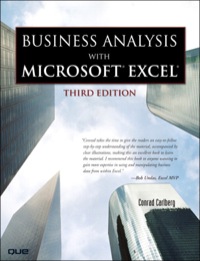Question
21) Which of the following is FALSE? a) The companys return on equity INCREASED from 2010 to 2011. b) The companys inventory turnover INCREASED from

21) Which of the following is FALSE?
a) The companys return on equity INCREASED from 2010 to 2011.
b) The companys inventory turnover INCREASED from 2010 to 2011.
c) The companys accounts receivable turnover DECREASED from 2010 to 2011.
d) The companys net profitability DECREASED from 2010 to 2011.
22) Note that the companys total assets grew by roughly 43% over 2011. Understanding that asset growth is achieved mainly through debt and equity issuance and profitable operations, what is the ordering of the sources of this companys asset growth, from GREATEST to LEAST impact?
a) 1. Debt Issuance; 2. Equity Issuance; and 3. Profitable Operations
b) 1. Debt Issuance; 2. Profitable Operations; and 3. Equity Issuance
c) 1. Equity Issuance; 2. Debt Issuance; and 3. Profitable Operations
d) 1. Equity Issuance; 2. Profitable Operations; and 3. Debt Issuance
e) 1. Profitable Operations; 2. Debt Issuance; and 3. Equity Issuance
f) 1. Profitable Operations; 2. Equity Issuance; and 3. Debt Issuance
23) True or False At the end of 2011, the company can still raise capital by issuing common stock without having to amend the corporate charter (note: we discussed this concept in Unit 3).
a) TRUE
b) FALSE
24) True or False The company acquired other corporate entities during 2011 (note: we discussed this concept in Unit 2).
a) TRUE
b) FALSE
25) True or False If cost of sales relate to variable costs and operating expenses mainly consist of fixed costs, then in 2011, the companys variable cost per one unit of sales decreased relative to 2010.
a) TRUE
b) FALSE
26) Note that the company recognized interest income in both 2010 and 2011. This income most likely relates to:
a) Interest paid to bondholders.
b) Interest income from Accounts Receivable.
c) Amortization of intangible assets.
d) Interest from Notes Receivable.
CONSOLIDATED BALANCE SHEET (in millions) Cash and cash equivalents Accounts receivable, net of allowances Inventories Short-term investments Prepaid expenses Other current assets Total Current Assets Notes receivable Property and equipment, net Deferred taxes Other long-term assets Goodwill, net Intangibles, net Total Assets Dec 31, 2011 102.830 153,424 59,644 5,659 15,289 9,711 346.557 11,491 31,587 2,428 73,261 75,595 98,867 639.786 Dec 31, 2010 66,151 70,948 39,557 13,289 11,044 9,078 210.067 10,873 20,791 7,844 116,846 38,613 42,662 447,696 69,747 34,327 31.014 135.088 29.940 165,028 37,089 18,425 15,917 71.431 18.967 90,398 Accounts payable Accrued expenses Other current liabilities Total current liabilities Long-term liabilities Total liabilities Common stock, 50.0001 par; 60,000 shares authorized; 51,408 and 50,423 shares issued; 43,005 and 42,020 shares outstanding at Dec 31", 2011 and 2010, respectively Additional paid-in capital Retained earnings AOCI Treasury stock, 8,403 and 8,403 shares at cost at Dec 31", 2011 and 2010, respectively Noncontrolling equity interests Total stockholders' equity Total liabilities and stoclcholders' equity CONSOLIDATED STATEMENTS OF INCOME (in millions) 5 186,325 420,411 678 4 165,773 323,092 972 (132,543) (132,543) (118) 474.758 639.786 357.298 447.696 Sales revenue, net Cost of sales Gross profit Operating expenses Earnings before interest and tax Interest income expense) Earnings before tax Provision for income taxes Net income Dec 31, 2011 968,549 (606,601) 361,948 (208,178) 153,770 5,022 158,792 (61,473) 97,319 Dec 31, 2010 635,418 (359,564) 275,854 (154,230) 121,624 4,233 125,857 (50.132) 75.725Step by Step Solution
There are 3 Steps involved in it
Step: 1

Get Instant Access to Expert-Tailored Solutions
See step-by-step solutions with expert insights and AI powered tools for academic success
Step: 2

Step: 3

Ace Your Homework with AI
Get the answers you need in no time with our AI-driven, step-by-step assistance
Get Started


